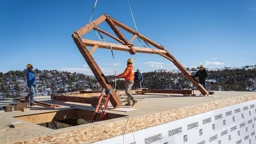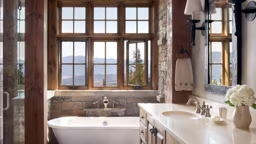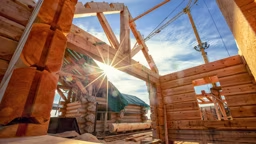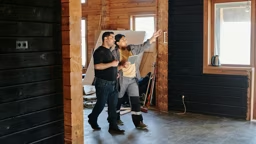This content is sponsored by Colorado Timberframe.

Photo: David Agnello
Timber frame homes are often praised for their energy efficiency and there is no doubt that these homes genuinely embody what it means to build a home that is at the same time environmentally friendly and cost-effective. However, when it comes to sustainability and “green building," some homebuyers might still wonder how timber frame homes really compare with their conventional counterparts.
Using The LCA Method to Measure the Sustainability of Timber Frame Homes
The Life Cycle Assessment (LCA) method is a globally accepted technique that is used to measure the potential environmental impact of a product or service. When analyzed using this method, wood actually outperforms traditional building materials like concrete and steel.
As far as homes are concerned, the LCA method evaluates the assemblies and building materials used over their full lifetimes based on their impact on the environment. Using the LCA approach, study after study has given wood a higher rating than concrete or steel in the areas of resource usage, impact on climate change and avoiding water and air pollution.
It doesn’t stop there, however. A home can only claim to be “green” if it also performs when people are actually living in it. This is when one should, for example, consider factors such as renovation, maintenance, heating, and cooling. And once it has outlived its useful purpose, the ideal green home should also be sustainable in the way it is demolished.

Photo: Vic Moss Photography
More Arguments in Favor of Timber Frame Homes
If it is managed professionally, there is a strong argument to be made that timber is in fact the only building material that is 100% sustainable - provided that sustainable forestry practices are followed and that for every tree that is harvested, at least one new tree is planted.
Looking at the issue through the lens of C02 emissions, it’s worth noting that the typical timber frame home, on average, saves around 4 tons of C02 when compared with an equivalent masonry home.
Timber frame homes also come with another sustainability credential: capturing carbon. Provided that the wood does not rot or burn, the carbon embodied in it will stay there forever.
Additional Ways to Enhance Your Home’s Sustainability
One of the most important factors in the sustainability of timber frame homes is their durability. If they are properly designed and maintained, these homes can offer many decades of reliable service. Additionally, modern innovations offer advanced ways to protect these homes against the dangers of fungal and insect damage.
Because of how easy they are to install, we also recommend the use of SIPs, or structural insulated panels. Thanks to their superior insulating abilities, they require less energy use and even reduce the production of waste material during the construction phase.
Finally, another way to further improve your home’s sustainability is by using recycled or reclaimed materials throughout, which offer the opportunity to infuse your home with personality and style.

Photo: James Ray Spahn
The Bottom Line About Timber Frame Sustainability
Environmental consciousness has been growing steadily across the world in recent decades. Simultaneously, timber frames have surged in popularity. We hope that after reading this article you will better understand why this is the case.
This content is sponsored by Colorado Timberframe.











